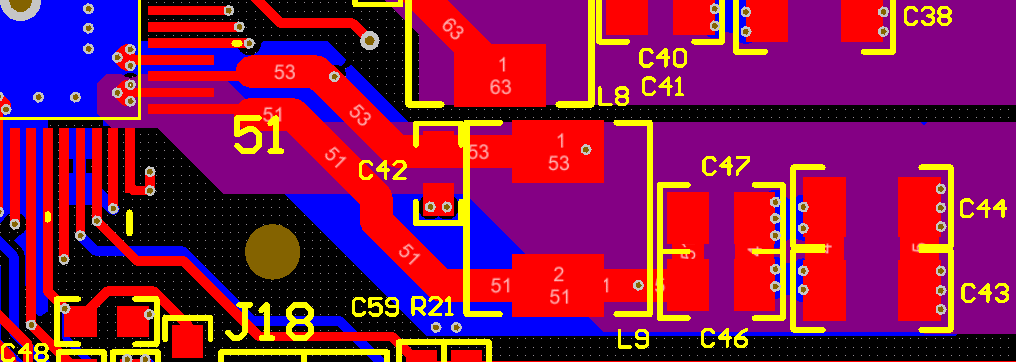DLPS052A October 2015 – September 2023 DLPA3000
PRODUCTION DATA
- 1
- 1 Features
- 2 Applications
- 3 Description
- 4 Revision History
- 5 Description (cont.)
- 6 Pin Configuration and Functions
- 7 Specifications
-
8 Detailed Description
- 8.1 Overview
- 8.2 Functional Block Diagram
- 8.3
Feature Description
- 8.3.1 Supply and Monitoring
- 8.3.2 Illumination
- 8.3.3 DMD Supplies
- 8.3.4 Buck Converters
- 8.3.5 Auxiliary LDOs
- 8.3.6 Measurement System
- 8.3.7 Digital Control
- 8.4 Device Functional Modes
- 8.5 Register Maps
- 9 Application and Implementation
- 10Power Supply Recommendations
- 11Layout
- 12Device and Documentation Support
- 13Mechanical, Packaging, and Orderable Information
Package Options
Mechanical Data (Package|Pins)
- PFD|100
Thermal pad, mechanical data (Package|Pins)
- PFD|100
Orderable Information
11.2 Layout Example
Figure 11-2 shows a layout example of a buck converter, illustrating the optimal routing and placement of components around the DLPA3000. Use this as a reference for a general purpose buck2 (PWR6). The layout example illustrates the inductor and its accompanying capacitors are as close as possible to their corresponding pins, using the thickest possible traces. The capacitors use multiple vias to the ground layer to maintain a low resistance path and minimize the distance between the ground connections of the output capacitors and the ground connections of the buck converter.
 Figure 11-2 Practical
Layout
Figure 11-2 Practical
LayoutA proper layout requires short traces and separate power grounds to avoid losses from trace resistance and to avoid ground shifting. Use high quality capacitors with low ESR to keep capacitor losses minimal and to maintain an acceptable voltage ripple at the output.
Use a RC snubber network to avoid EMI that can occur when switching high currents at high frequencies. The EMI may have a higher amplitude and frequency than the switching voltage.